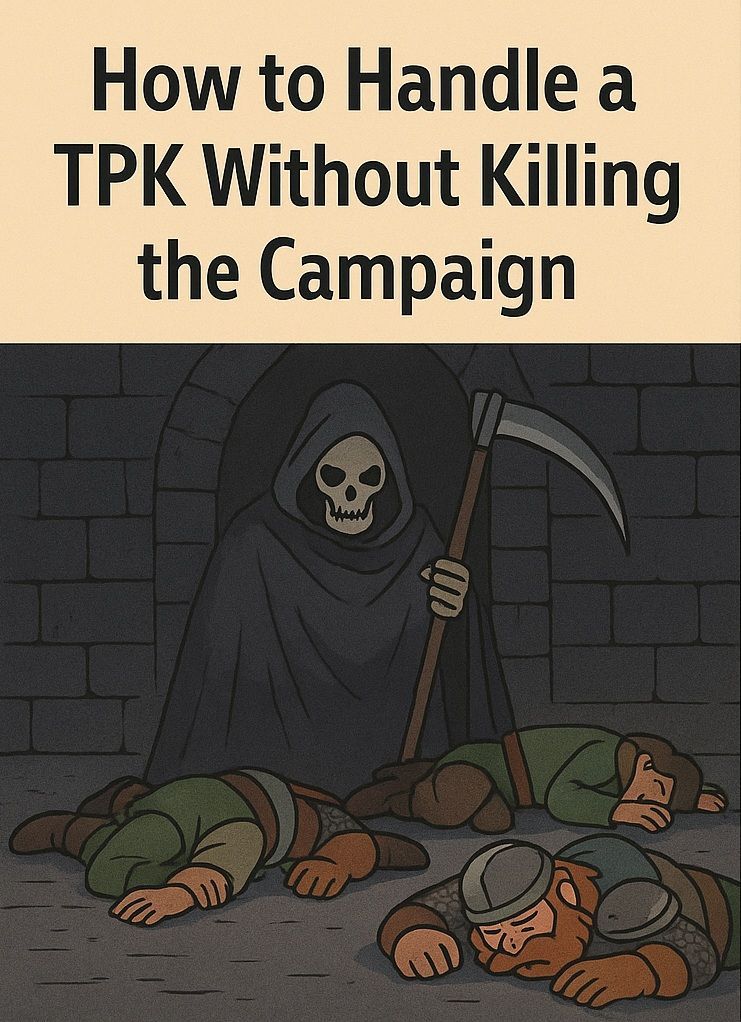Managing In-Game Resources and Player Wealth: Keeping the Game's Economy Balanced and Meaningful
Don't be a mansa musa, Trust me

Dear Readers,
One of the trickiest aspects of running a balanced Dungeons & Dragons game is managing in-game resources and player wealth. Too little gold and players feel restricted; too much and the economy loses meaning. A well-maintained in-game economy keeps treasure rewarding, spending meaningful, and choices impactful. In this guide, we’ll explore how to handle player wealth, magic items, and resources without breaking immersion or turning your game into an economic free-for-all.
The Role of Wealth in D&D
Wealth in D&D isn’t just about amassing gold—it represents progress, power, and opportunities. However, when players accumulate too much gold with nothing to spend it on, the economy loses its weight. To keep the economy meaningful, DMs must:
- Control the flow of gold to avoid overinflation.
- Offer compelling spending opportunities beyond basic gear.
- Use resources as a tool for storytelling rather than just a number on a sheet.
Sources of Wealth in a Campaign
Before managing wealth, it’s important to understand how players acquire it:
- Loot from Monsters and Dungeons – Gold, gems, and magic items from defeated enemies.
- Quest Rewards – Payment from NPCs for completing tasks.
- Trade and Crafting – Players selling items, forging weapons, or enchanting gear.
- Treasure Hoards – Hidden caches of wealth found in ancient ruins.
- Business Ventures – Owning taverns, running mercenary groups, or trading goods.
- Crime and Theft – Smuggling, bribery, and black-market dealings.
Understanding these sources allows you to regulate the influx of wealth and prevent players from accumulating too much too quickly.
Managing Gold and Inflation
If players amass too much wealth, they can break the game’s economy. Here are ways to balance gold distribution:
1. Use a Treasure Budget
The Dungeon Master’s Guide provides guidelines for appropriate wealth at different levels. If characters exceed these limits, consider adjusting future rewards.
2. Limit Liquid Wealth
Instead of giving out piles of gold, reward players with assets such as:
- Land and Property – Keeps, strongholds, or businesses.
- Favored Status – Noble titles, political influence, or military rank.
- Exotic Goods – Rare gems, magical components, or historical relics.
3. Make Large Purchases Available
Give players meaningful ways to spend their gold:
- Training & Knowledge – Learning new skills, spells, or languages.
- Armies & Mercenaries – Hiring bodyguards, spies, or assassins.
- Magical Services – Paying for resurrection, enchantments, or divination.
4. Introduce Economic Challenges
Money should fluctuate with supply and demand. Players may face:
- Rising Costs – War, famine, or trade embargoes causing inflation.
- Currency Problems – Local economies rejecting foreign gold.
- Theft & Loss – Bandits, corrupt officials, or magical mishaps draining funds.
Handling Magic Items and Gear
D&D’s economy often revolves around magic items, but handling them correctly is crucial for balance.
1. Control Magic Item Availability
Not every city should have a magic shop with high-level artifacts. Instead:
- Keep powerful items rare and quest-worthy.
- Limit access to legendary gear without in-world justification.
- Use unique crafters, rare materials, and guild permissions for acquisition.
2. Use Charges and Consumables
Instead of permanent magic items, introduce:
- Scrolls and Potions – One-time-use items.
- Charged Wands and Staves – Items that deplete over time.
- Cursed or Unstable Magic – Powerful but risky artifacts.
3. Allow Custom Enchantments
Give players an opportunity to invest in magic by:
- Commissioning enchantments for existing weapons.
- Requiring rare ingredients for modifications.
- Making magical upgrades a story-driven process.
Keeping Resource Management Engaging
Resource scarcity can drive tension and challenge, but it shouldn’t feel like bookkeeping. Here’s how to make it engaging:
1. Encourage Downtime Investments
Let players invest resources in ways that impact the story:
- Building strongholds and establishing bases.
- Running trade routes, caravans, or magical research.
- Fostering alliances and hiring retainers.
2. Introduce Logistics and Supply Challenges
Make travel, warfare, and crafting reliant on managing resources:
- Long expeditions requiring food and survival gear.
- Maintaining a fleet, airship, or magical constructs.
- Securing supply lines in hostile territories.
3. Tie Wealth to Character Goals
Personalize wealth by linking it to character motivations:
- A noble seeking to reclaim their ancestral lands.
- A rogue aiming to establish a criminal empire.
- A wizard funding dangerous arcane experiments.
Final Thoughts
Managing in-game wealth requires more than just limiting gold—it’s about making it valuable. By controlling rewards, offering meaningful expenditures, and integrating resources into storytelling, you can keep your game’s economy balanced and engaging. Whether your players are humble adventurers or powerful lords, wealth should always be more than just numbers on a character sheet.
Until next time, Dear Readers...
























